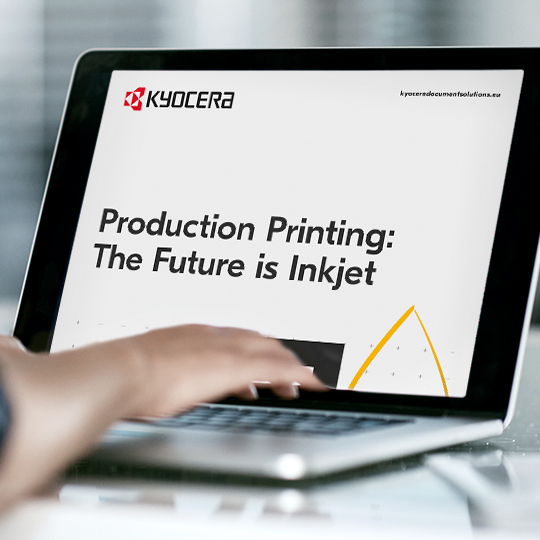Companies in the 21st century are more conscious than ever of the need to be environmentally sustainable, and this is particularly important when considering large scale printing jobs which require technology like production printing.
The pressure on companies to comply with environmental regulations is at an all-time high, as businesses strive to double down their efforts to mitigate the effects of climate change. Becoming more environmentally friendly and sustainable is becoming increasingly paramount for most companies.
As one of the greatest uses of energy and resources when printing large-scale jobs, it is essential that the planet is kept top of mind. The overall pulp, paper and print industry in Europe is somewhat energy intensive, amounting to around 3.1% of the continent’s energy consumption, according to an Impress Print article.
Adopting a “greener” business approach is not only good for the environment. Companies have also noticed consumer trends indicate that people are more likely to invest in products and services when the vendor they procure from offers more environmentally friendlier options than the competition.
The technology that a company chooses for its print output will help determine how eco-friendly the business becomes. Digital inkjet printing technology is a prime example of a printing method that will support a reduction of environmental contamination.
The technology used for inkjet printing provides a way for businesses to print more efficiently and sustainably, which of course has a positive impact on the environment, whilst also saving them money thereby creating a win-win situation for all involved in the efforts.
Here is how inkjet technology can help companies minimise their environmental impact:
The Future is Inkjet
1. Reduced wastage
Inkjet devices use ink cartridges to transfer a digital image onto a printed format. In general, digital printers are the smartest option for medium scale production runs which can be difficult to execute at a reasonable cost. Production printing means that the precise quantity of prints needed can be calculated and printed efficiently, without overproducing and ending up with waste that needs to be disposed of.
Rather than overprinting in order to meet the required quantity and then wasting thousands of copies along with the energy used to print them, these devices can print the specific range required.
In addition to the many ink cartridge-recycling initiatives promoted by numerous companies that rely on inkjet, there are now “green” alternatives that have more natural and eco-friendly inks finding their way into the printing market. These are designed to be less harmful for the environment than other, more artificial inks.
2. Lower energy consumption
Inkjet printers actually consume very little electricity compared to other digital technologies, such as laser devices. Laser printing uses significant quantities of energy as these machines must heat up the toner in preparation for printing, and maintain these very high temperatures throughout the entire process.
In addition, laser devices function with a variety of advanced units and supplies, which all-together increase the energy consumption of this printing technique, whereas inkjet printers only require the use of cartridges.
Switching from laser technology to inkjet will prove highly beneficial to companies that must comply with regulatory energy consumption limits when printing at large scales, as the levels of energy used by inkjet does not put them at risk of overstepping the restrictions.
3. Efficiency in innovation
Another important point to take into account is that inkjet enables users to print vast quantities of customised documents automatically in a single pass, meaning that there is no need to have two separate devices (digital and offset) to simultaneously prepare different sections of content that requires personalisation, which is one of the methods used by some companies. Whilst laser devices do allow for this, it comes at a far greater cost, one which makes it unsustainable in the long-term given the rise of inkjet technology.
Inkjet printers are all-in-one devices thanks to their innovative variable printing capabilities, meaning that the overall energy consumption and waste generation levels can be cut down to a minimum.
Given the growing demand for more personalised content, in the marketing industry for example, this ability is very attractive for companies that want to continue producing high amounts of prints but also concentrate on reducing their carbon footprint to demonstrate their commitment to protecting the environment.

Read the eBook
Download a copy and learn more about the future of production printing.

